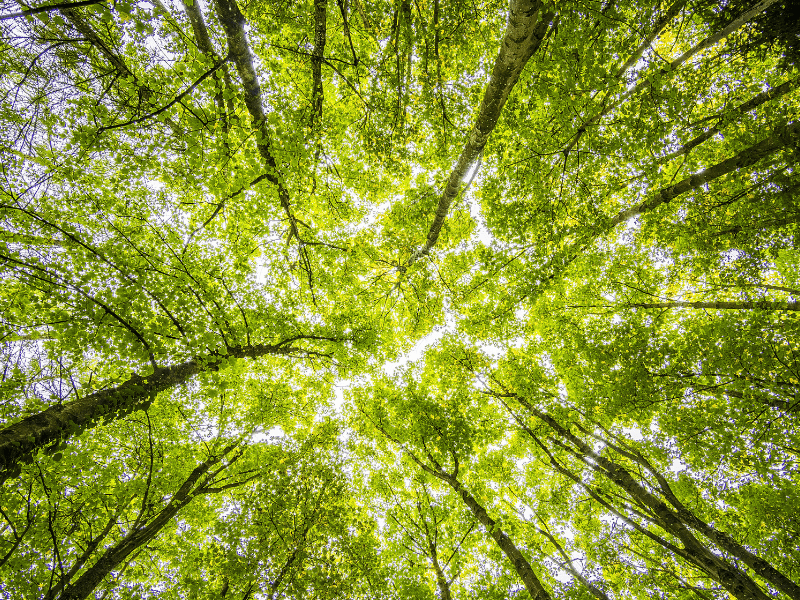International Forest Day is an annual celebration of the importance of trees in our environment. It is celebrated around the world on March 21. An educational component open to all has also been set up. We wanted to find out more! Lucie Pelous, coordinator of the International Day of Forests, answered our questions.
1. What drew you to join the Teragir team organizing International Forest Day?
I joined the Teragir association after obtaining my Master 2, as a logical and obvious extension of my studies, specializing in sustainable development at Kedge Business School in Marseille.
Teragir runs a series of ambitious action programs in favor of sustainable development. This is what attracted me in the first place and what I continue to invest myself in every day in my missions.
In 2014, I helped set up the International Forest Day (IWD) program as a project manager, and in 2016 I became its national coordinator.
2. What role does International Forest Day play in the forestry and wood industry?
International Forest Day (IWD) was proclaimed every year on March 21 by the United Nations (UN), to put forests in the spotlight.
In France, the Teragir association has put together a wide-ranging program of activities to mark March 21, taking place all over the country, in mainland France and overseas.
The forestry and timber industry is invited to join in this dynamic by organizing and supporting projects to raise awareness of its reality and challenges.
The aim of IWD in France is to raise awareness among the general public and help them (re)discover the French forest, its many facets and major challenges, as well as the strong link between forests and sustainable development.
These include, for example, reconciling the 3 functions of the forest, its sustainable management and the fight against climate change. We speak of multifunctionality: forests have environmental functions (hosting biodiversity, filtering air and water, regulating temperatures, etc.), social functions (hosting the public, source of well-being, influence on the collective imagination, etc.) and economic functions (wood production, job creation, innovation, etc.).
Sustainable forest management enables us to preserve the many ecosystem services provided by the forest, and is therefore a key issue in the context of climate change; the forest is both a resource and a solution.
Last but not least, we are working with a number of players in the forestry sector on the deployment and organization of the IYF.
As part of the educational component of the operation, entitled "La Forêt s'invite à l'École" (The Forest invites itself to school), we are offering endowments, in partnership with the Pépiniéristes Forestiers Français, the Office National des Forêts (ONF) and the Centre National de la Propriété Forestière (CNPF).
3. What difficulties do you encounter on a day-to-day basis in carrying out your mission?
The complexity we encounter lies in the multiplicity of players and uses of the forest, which may, at first glance, be seen as contradictory or antagonistic. We work hard to make people understand that these multiple uses are not in competition with each other, but can in fact be complementary and connected.
4. What successes can you look back on?
We're delighted with the growing popularity of the IWD and its educational component, La Forêt s'invite à l'École. Every year, more and more projects are organized and more and more people take part.
This year, over 1,000 events were organized for March 21, and during the 2019-2020 school year, nearly 18,000 students took part in La Forêt s'invite à l'École, corresponding to 600 classes. Another source of great satisfaction for the team is the many testimonials from project leaders and organizers, attesting to the benefits of the operation for participants, both the general public and students. "After discovering the forest environment, students' attitudes and behavior change. And that's something they can pass on to adults too, to their parents and relatives," says Elisabeth Guichard, nature coordinator at ONF.
5. Who can become an organizer? Who can become an organizer?
A wide range of organizations can become organizers!
Associations, local authorities, schools and businesses (particularly in the forestry and timber industries) can organize events and activities open to all for the week-long celebration of March 21: forest outings, visits and open houses, conferences and debates, screenings, exhibitions - the choice is wide!
For La Forêt s'invite à l'École, local authorities or associations can organize a project for a beneficiary school. Schools can also organize their own projects.
The IYF and its two components are a great opportunity to bring together players from the same region around a common theme: the forest.
The team provides organizers with a wide range of teaching aids and resources to help them design, implement and run their event: activity sheets, communication kits, key data on the forest, etc.
As part of the "La Forêt s'invite à l'École" educational program, we offer tree seedlings to organizers, to enable them to organize educational plantings, forest outings and educational booklets for their pupils.
The Organizer space on our website gives access to the resource library and registration file: journee-internationale-des-forets.fr
Many thanks to Lucie Pelous for answering our questions!



